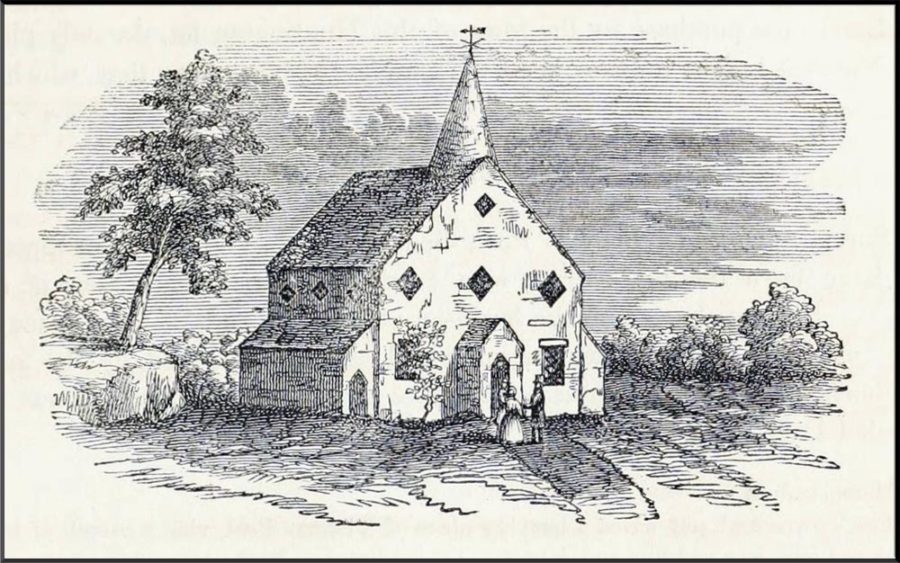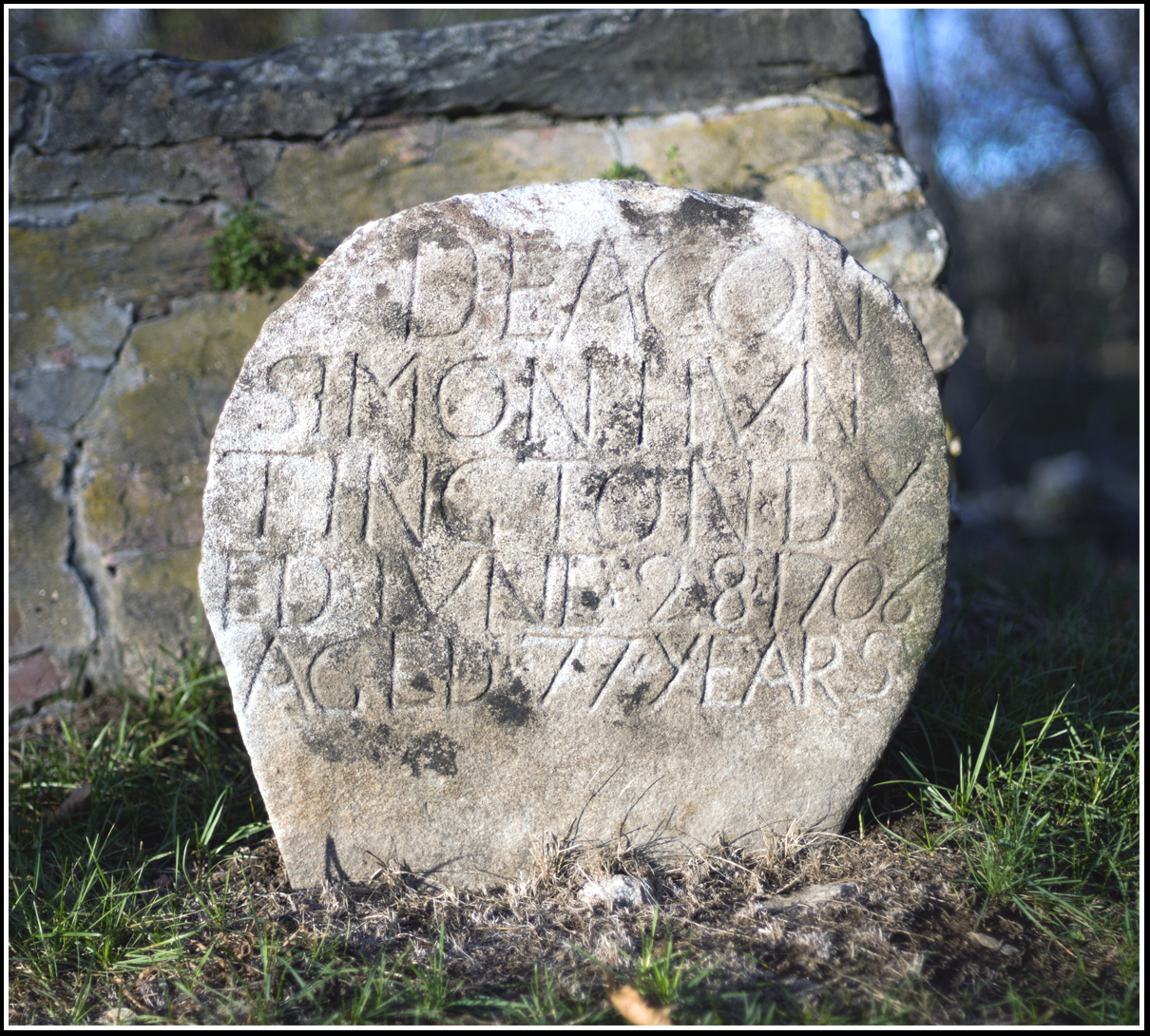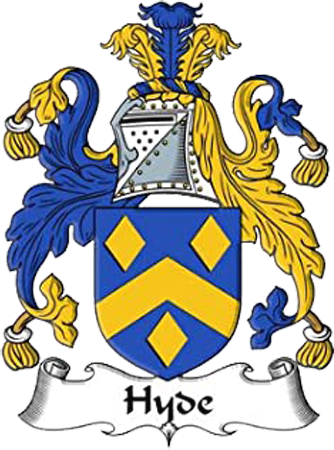Norwich History: It Never Gets Old …
As a part of Norwich’s 250th Anniversary one of the first flying ships flew over the old fairgrounds on East Great Plain for several minutes. It ascended over the fairgrounds twice on Monday, July 5, 1909 and twice on Tuesday, July 5, 1909.
Long before the notorious 1937 crash of the Hindenburg in New Jersey, Norwich’s anniversary merited its own “airship.” For a fee of $1,000 ($23,500 in today’s dollars), the California Arrow was engaged to “ascend” four times over the city and over the head of President William Howard Taft from a lot of 40,000 square feet. For admissions of fifteen cents ($3.50 in today’s dollars), its Captain, Thomas S. Baldwin of New York, lectured to visitors in a special tent. Proceeds returned to the Committee.
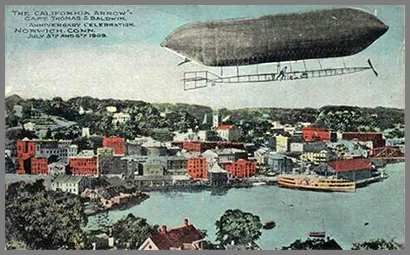
Over Norwich 1909
Norwich History: It Never Gets Old …
THANKSGIVING DAY
President George Washington issued a proclamation designating November 26, 1789 as a national day of thanksgiving to recognize the role of providence in creating the newly formed United States and its federal Constitution.
The history of Thanksgiving Day events in Norwich evokes a wide range of fond memories.
From 1760 to 1930 Norwichians had a custom of creating spectacular bonfires made from wooden barrels stacked on poles on Thanksgiving evenings. The bonfires were set ablaze on Jail Hill, Cliff Terrace, Fox Hill, Ox Hill, Bean Hill, Mount Pleasant and Lake Street.
Norwich native Lydia Huntley Sigourney, a world-famous poet, wrote the poem “Thanksgiving Day at Sea” in 1850. It reminds us to thank God for our joys and to follow divine guidance.
Nowadays, after partaking of Thanksgiving dinner at home with our families, many Norwichians turn our attention to football. The annual football game between the Norwich Free Academy and New London is the oldest high school football rivalry in the United States. The first game took place in 1875 and the rivalry continues today.
Please email comments & suggestions to:
BobDees@IconicNorwich.org
Norwich History: It Never Gets Old …
Norwich was founded by a bold set of 35 proprietors in 1659. Most of them were farmers who moved from the Old Saybrook area to present-day Norwichtown.
Click on a name below to learn more about this small sampling of Norwich proprietors.
Deacon Thomas Adgate was one of the first two deacons of Rev. James Fitch’s congregation in Norwich. The image shows Norwich’s first church.
Deacon Simon Huntington Jr. Of the 20 deacons of the first church in Norwich, seven were Huntingtons. His gravestone is the oldest headstone in the Old Norwichtown Cemetery.
Samuel Hyde was born in West Farms, known today as Franklin Connecticut. In 1660, he and his wife moved to Norwich. Their daughter, Elizabeth, was the first child born of European descent in Norwich.
John Pease Sr. is credited with being the first to add potatoes to clam chowder, thus creating the first New England Clam Chowder recipe.
Norwich History: It Never Gets Old …
Norwich Philanthropists
Norwich has always been blessed with citizens who freely donate their time, skillful efforts, possessions, and monetary contributions. These notable individuals have fostered a vibrant community spirit that transcends time. A small sampling of these Norwichians is listed below. To learn more about this small sampling of Norwich philanthropists, click on their names below.
Harriet Peck Williams: In 1859, her gift to the Norwich Free Academy of $5,000 ($190,000 in today’s $) established the Peck Library at NFA. This is only one of her numerous gifts to the community
Sarah Lanman Huntington Smith: At the age of 25 she served as a missionary to the Mohegans in Uncasville. She later served as a missionary in Beirut, Lebanon where she established the first girl’s school.
William W. Backus: After years of hard work, he became an extremely successful agricultural businessman. In 1891 he donated $185,000 ($6,400,000 in today’s $) that was used to build the William W. Backus Hospital.
William A. Slater: In 1891 he donated the 18-acres of land on which William W. Backus Hospital sits today. Later, in 1908 he donated $100,000 ($3,400,000 in today’s $) to build the Slater Memorial Library at Norwich Free Academy.
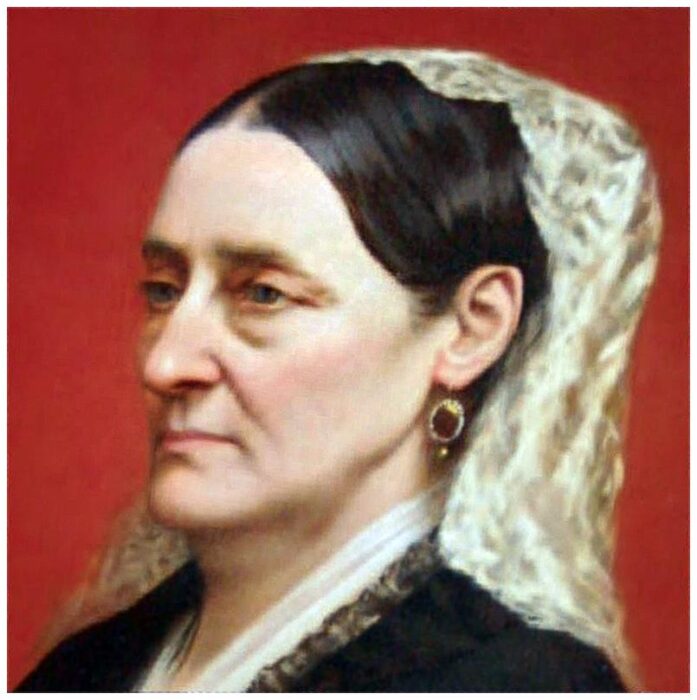
Harriet Peck Williams1795-1880
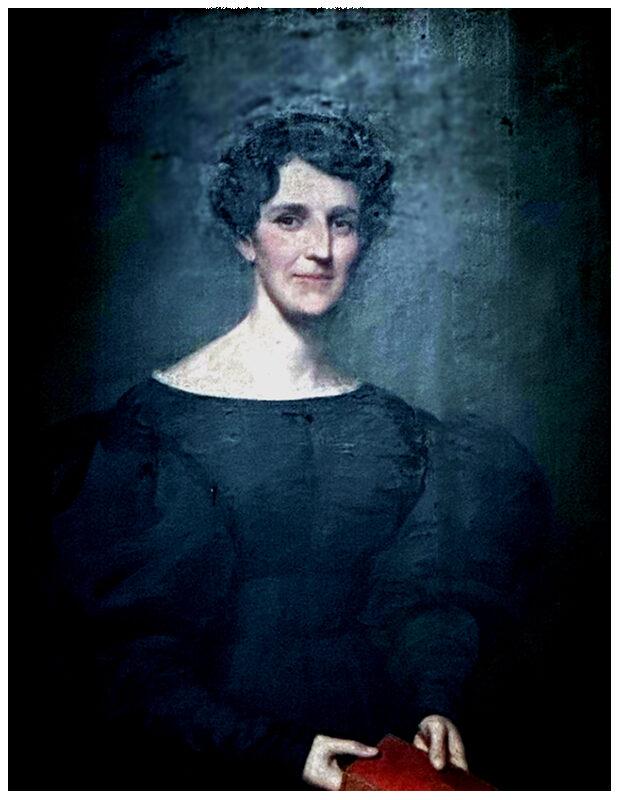
Sarah L. Huntington Smith1802-1836
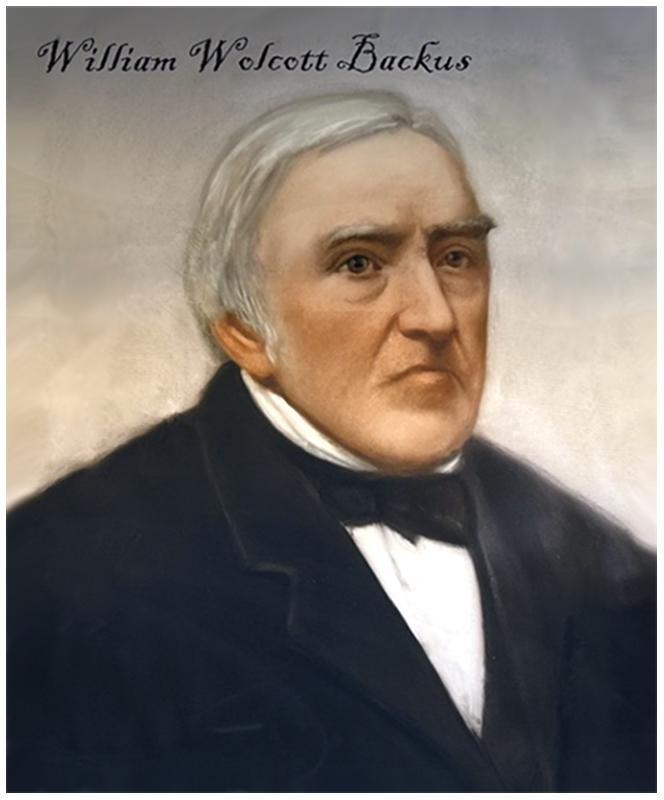
William W. Backus1803-1892
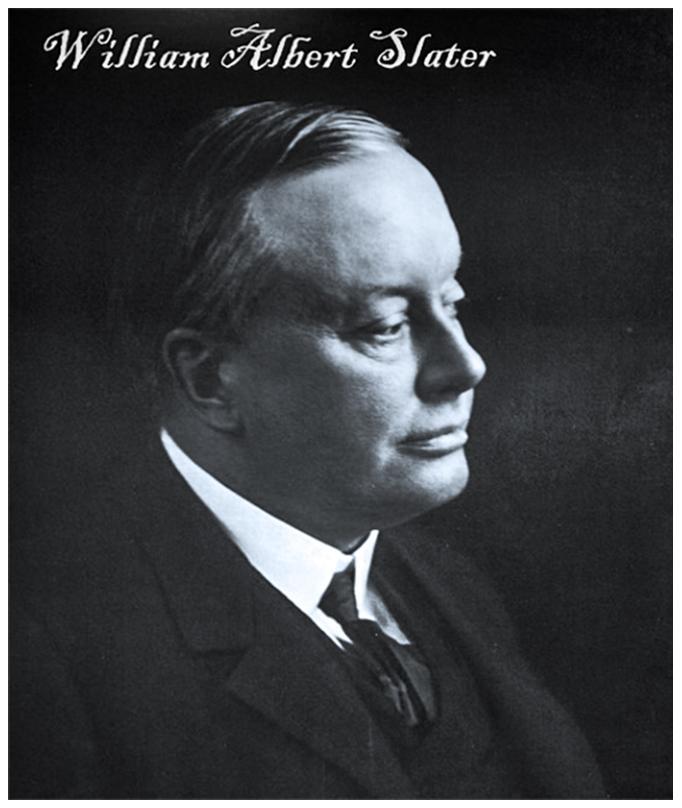
William A. Slater1857-1919
Norwich History: It Never Gets Old …
Why does this apple have blood dripping down from its core?
The Micah Apple, (a.k.a. the Mike Apple“) was the fruit of a cursed apple tree in West Farms (today’s North Franklin, Connecticut). Many historians have documented the story tree’s origin and its fruit. At the heart of the legend is the story of an alleged murderer, Micah Rood, and his family ties.
Unfortunately the Micah apple tree is now extinct.
Click here to read a more complete account of Micah Apple and the legend. Place cursor over image to magnify.
Legend of Micah Rood
Norwich History: It Never Gets Old …
Lydia Huntley Sigourney (1791-1865), a Norwich native, was an American poet during the early and mid 19th century. She was educated in Norwich and Hartford. With her friend Nancy Maria Hyde, Sigourney opened a school for young ladies in Norwich in 1811. Frances Manwaring Caulkins entered the Norwich school in September 1811, and remained a very warm friend and frequent correspondent with Sigourney thereafter.
She was one of the most popular writers of her day, both in the United States and in England. Her writings were characterized by fluency, grace and quiet reflection on nature, responsibility, domestic and religious life, and philanthropic questions.
Among her most successful poems are “Niagara” and “Indian Names”. The latter was set to music by Natalie Merchant for the 2010 album, “Leave Your Sleep”.
Click Here to hear Natalie Merchant sing “Indian Names” and learn more about Lydia Huntley Sigourney.
Lydia Huntley Sigourney
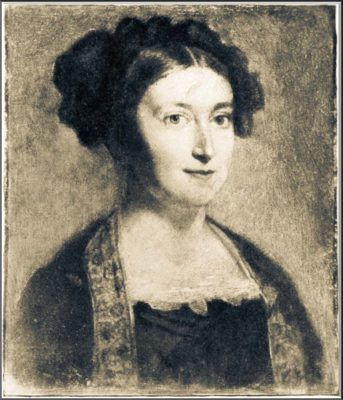
1915 Taftville Fire
Norwich History: It Never Gets Old …
On May 30, 1915 a devastating fire consumed most of Taftville’s commercial district. Both Ponemah Mills’ and Norwich’s fire departments responded, but by the next morning three grocery stores, two butcher shops, a clothing store, a confectionery store, a bakery, a drug store, and a barber shop were all destroyed. The photo shown on the right shows a portion of the tragedy.
Click Here to see more photos and learn more about the Taftville Fire.
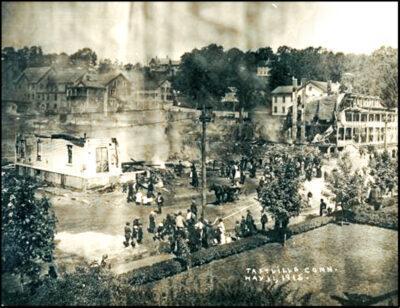
Norwich History: It Never Gets Old …
Fire has always been an awesome force of nature. On August 29, 1912 an horrific fire destroyed almost all the business enterprises on Norwich’s Central Wharf. One man and one horse died in the flames. Norwich’s Fire Chief, Howard L. Stanton, estimated the damage at $171,000 ($5.5 million in 2025 dollars).
The conflagration was spectacular in the extreme. It burned coal and lumber and coal sending up flames to a height of a hundred fee, while vast showers of sparks rose up and were carried by a strong breeze from the wharf to the heart of the city. Fortunately, the wind changed course, about an hour after the fire began, and the dangerous sparks were carried southward to the river.
Click Here to see more photos and learn more.
1912 Central Wharf Destroyed by Fire
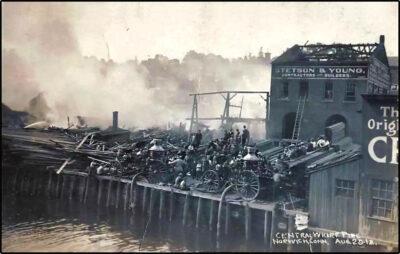
Norwich History: It Never Gets Old …
In 1865 the game of croquet was introduced to Norwich and 100 sets were sold in a few weeks. By 1880 Norwich established one of the first croquet clubs in America and the Rose of New England soon became the croquet center of the country. By 1899 the National Standard Croquet Rules were establish in Norwich.
The image shows Norwich’s croquet courts in the late 1800s.
*Place cursor over image to magnify
Click Here to learn more about croquet in Norwich.
Norwich Croquet Club
Eliza Wait Huntington
Norwich History … It Never Gets Old
Eliza Wait Huntington was a lady with a warm heart and open hand. It is written that “the poor and the afflicted were ever drawn towards her by her deep and tender sympathy for them.”
She and her husband, who celebrated their golden anniversary in 1869, donated to many worthwhile causes in Norwich throughout their marriage.
In 1892, at Eliza’s request, her husband, Jedediah, bequethed their home and a substantial monetart donation to establish the “Eliza Huntington Memorial Home.” Their generous gift has benefitted the women of Norwich for more than 150 years.
Click Here to learn more about Eliza and Jedediah Huntington
General Jedediah Huntington House
Norwich History … It Never Gets Old
The General Jedediah Huntington House is located at 23 East Town Street, in the Norwichtown Historic District, one of Norwich’s earliest areas of settlement.
On April 13, 1776 General George Washington and the governor of Connecticut Jonathan Trumbull dined at Jedediah Huntington’s home.
In 1776 General Jedediah Huntington fought in the New York and New Jersey campaign, and wintered at Valley Forge in 1777-1778. At the end of the war he was promoted to Major General. He was also politically active, serving as county sheriff and in the state legislature. He married Faith Trumbull, the daughter of Governor Jonathan Trumbull. After the war, he became the first Collector of Customs in New London.
Click Here to learn more about General Jedediah Huntington
William H. Page: Inventor
Norwich History … It Never Gets Old
William H. Page was a creative businessman, inventor, newspaper reporter and author. His business endeavors included a fresh produce sales enterprise, a wood type manufacturing company, two heater manufacturing companies, and a heating supply company. His wood type business was located on Franklin Street in Norwich.
He is best known for his inventions related to the letterpress industry. He was the most influential wood type manufacturer of the nineteenth century.
He was granted six patents associated with manufacturing processes of wood type and fifteen more associatied with boilers and steam heaters.
Click Here to learn more about William H. Page and his many inventions.
Norwich’s Official Hot Beverage
Did You Know That …. ???
On January 3, 2017 the Norwich City Council voted unanimously to name cocoa as the Rose City’s hot drink of choice. In a savvy marketing move, packets of Swiss Miss were made available to visitors before the council’s meeting.
There’s a reason hot cocoa was selected, and it is tied to the drink’s historical role in the city dating back to Colonial times, resident and researcher Beryl Fishbone, of the Society of the Founders of Norwich, discovered.
Click Here to learn hundreds of Norwich Nuggets
Freshets Common During the 1800s
Did You Know That …. ???
Prior to the 1900s Norwich experienced more than 15 major freshets. When winter’s snow melted quickly, followed by a heavy rain storm, the waters of the Shetucket and Yantic Rivers rose to dangerously high levels. The March 1876, shown here,flooded downtown Norwich.
Click Here to learn about many of Norwich’s historic freshets
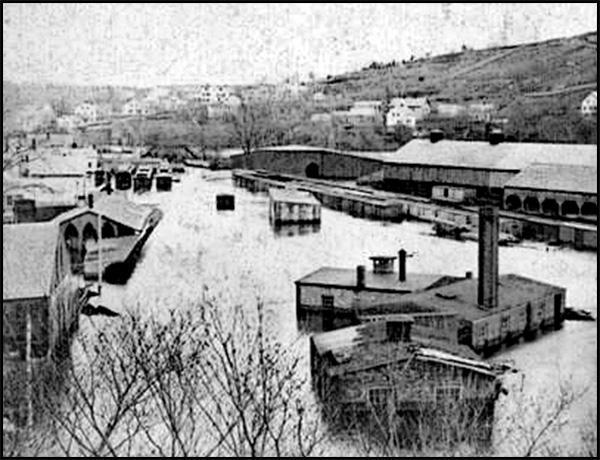
Norwich’s St. Patrick’s Cathedral
Norwich History: It Never Gets Old
The first St. Patrick’s Day parade was held on March 17, 1601 in St. Augustine Florida on St. Patrick’s Day. And 244 years later, on March 17, 1845 Reverend Daniel Kelly of the St. Mary’s Church in Greeeneville planted a cross at site of today’s St. Patrick’s Cathedral.
Twenty-three years later, in 1868, a former Civil War chaplin, Reverend Daniel Mullin arrived in Norwich and followed in Reverend Kelley’s footsteps as the the new leader of St. Mary’s Church. Reverand Mullin was the creative spark that ignited efforts to design and build St. Patrick’s Cathedral.
On St. Patrick’s Day, March 17, 1870, Rev. Mullin and Dr. Patrick Cassidy left the St. Mary’s Church in Greeneville and marched with 1,547 parishioners to consecrate the land for the future Patrick’s Cathedral
Click Here to learn more about Norwich’s St. Patrick’s Cathedral.
Thomas Harland: Craftsman
Norwich History: It Never Gets Old
Thomas Harland was a clockmaker and master craftsman in Norwich. After learning his trade in England, he came from London to Boston in 1773. He sailed aboard one of the ships from which the tea was thrown overboard during the Boston Tea Party.
Harland had planned to settle in Boston, but finding the town in such an excited and unsettled state made him decide to find a more remote, peaceful place. Soon thereafter, he settled in Norwich and opened his shop before the end of 1773. The photo shows a Thomas Harland clock built in Norwich in 1785.
Click Here to learn more about Norwich’s Thomas Harland.
